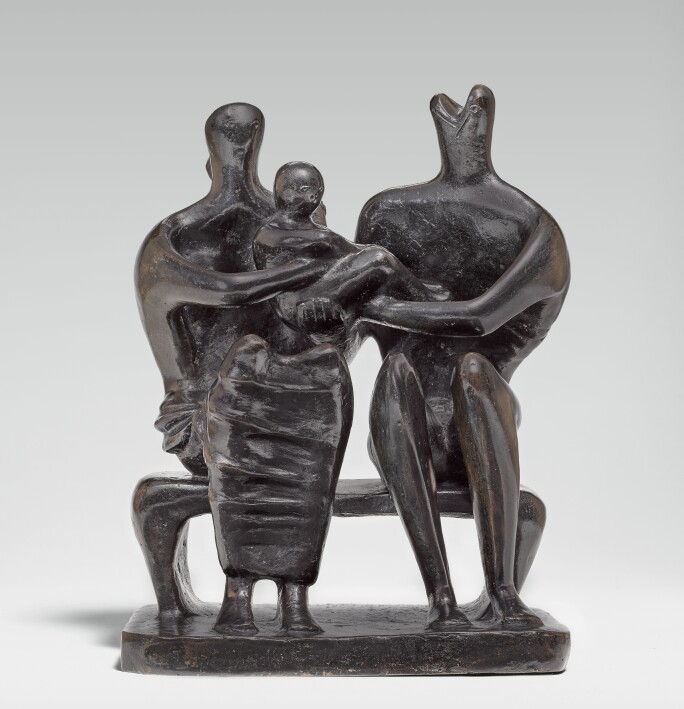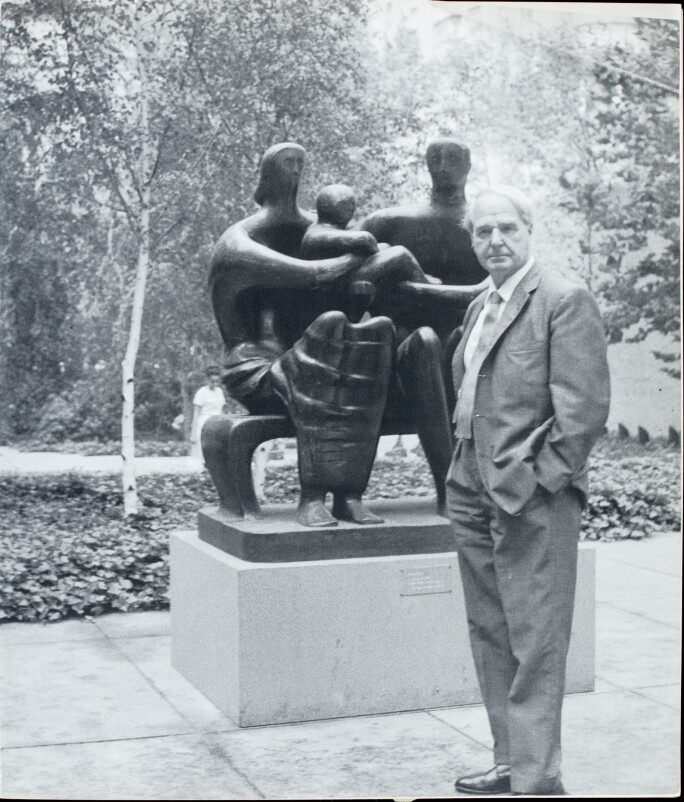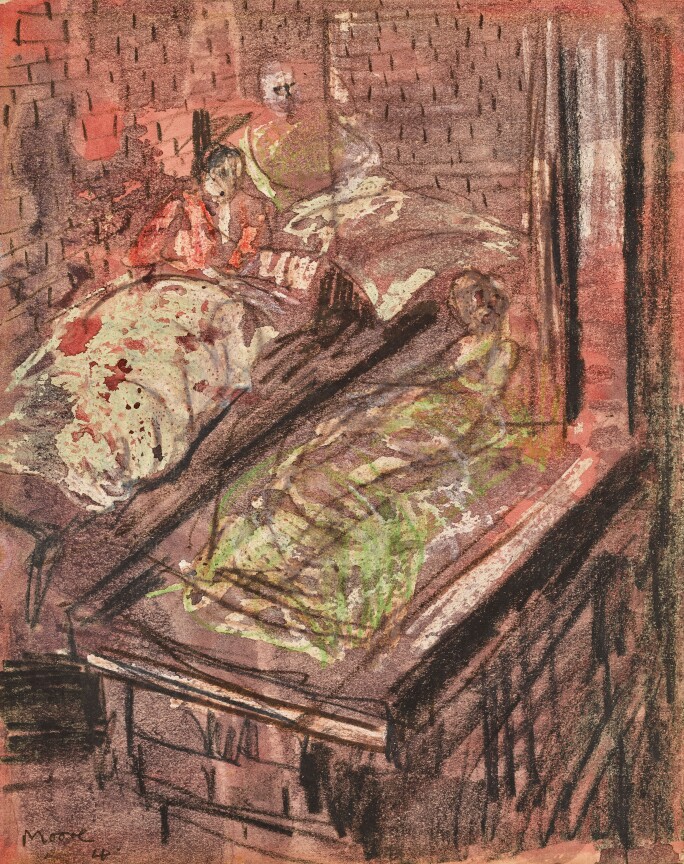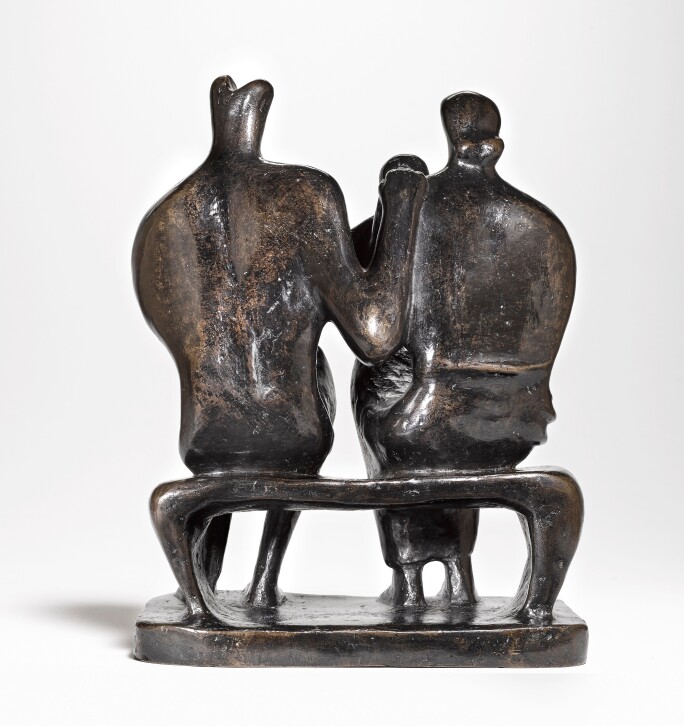I mmediately after the war, the architect Eugene Rosenberg commissioned Henry Moore to create a site-specific, large-scale sculpture for the Barclay School, in Stevenage, England. Rosenberg was a founding member of the architectural practice York, Rosenberg and Mardall and a visionary Modernist, architect of Gatwick Airport, the University of Warwick and St Thomas’ Hospital, London.
A main principal of his practice was to visualise architecture and art together, working closely with avant-garde contemporary artists, such as Moore and William Scott. His spaces were equally indebted to art and architecture. His natural sympathy with the artists with whom he worked led to him becoming a significant collector. Sotheby’s had the honour of selling a large part of his personal collection, including works by Henry Moore, F.E. McWilliam, William Scott, Naum Gabo and Eduardo Paolozzi in November 2014.
Barclay School was the first purpose-built comprehensive secondary school built in Britain after the war and Moore’s monumental version of Family Group was installed in 1950. The Barclay School Family Group, for which the present work is the maquette, was Moore’s first large-scale commission in bronze, a seismic moment in his long and distinguished career. As well as the version at Barclay School, Stevenage, casts are held by the Tate, London; the Museum of Modern Art, New York (where Moore was photographed in front of the work, the Hakone Museum, Hakone; and the Norton Simon Museum of Art, Pasadena.
With this work, Moore drew on preparations for an earlier project, begun as war broke out, for prominent Modernist architects Walter Gropius and Maxwell Fry for a sculpture for a progressive school in Impington, near Cambridge. This school was designed as a focal point for the entire community, for parents as well as children, and thus Moore settled on the family group. Though this scheme failed to come to fruition due to a lack of funds, Moore continued to explore the motif of the mother, father and child (or children) through smaller-scale maquettes, as with the work to be offered in Modern & Post War British Art Evening sale on 20 November 2018, and also in his sketchbooks.
As an Official War Artist, Moore produced numerous drawings of civilians huddled in underground stations, sheltering from the bombing raids over London, such as Shelter Drawing: Three Sleeping Figures in Basement, lot 137. These figures, clinging together for comfort and warmth, and draped in blankets, were of fundamental significance to Moore’s creative development of the family group scene and demonstrated the political bearing of his universal motifs:
…the scenes of the shelter world, static figures asleep – reclining figures – remained vivid in my mind. I felt somehow drawn to it all. Here was something I couldn’t help doing’
Turning to the family group immediately after the war was a creative progression both political and personal. Seen in the light of the post-war period, the family became a symbol of hope and love, of the intransigence of human bonds of support, compassion and care, and of turning to the domestic and inner life in the face of immense and universal experiences of trauma. The family group also had a particularly personal resonance as Moore and his wife, Irina, had their first and only child, Mary, in 1946 after many years of marriage. She was a much loved and longed for addition to the family, and thus the household grouping in Moore’s sculpture took on a new significance.
The present cast, conceived in 1945 and cast by 1947, was formerly in the collection of the Museum of Modern Art in New York, a clear indicator of its significance within Moore’s oeuvre. In this work, the mother and father, sitting together on a bench and mirroring one another, hold their child entwined in their arms:
the arms of the mother and the father [intertwine] with the child forming a knot between them, tying the three into a family unity
The sculpture is poised between Moore’s modernist sensibility for abstraction, present in the prominent striated ridges of the mother’s robes or the father’s Picasso-esque head, and touching naturalistic details. The outer shoulders of both mother and father curve gently inwards, an intimate protective stance that encloses their child and unifies the group. Allied with its exquisite finish and exceptional provenance, the present work is a testament to Moore’s unparalleled achievements in sculpture. It will be offered as a highlight of the Modern & Post-War British Art Evening sale on 20 November 2018.






